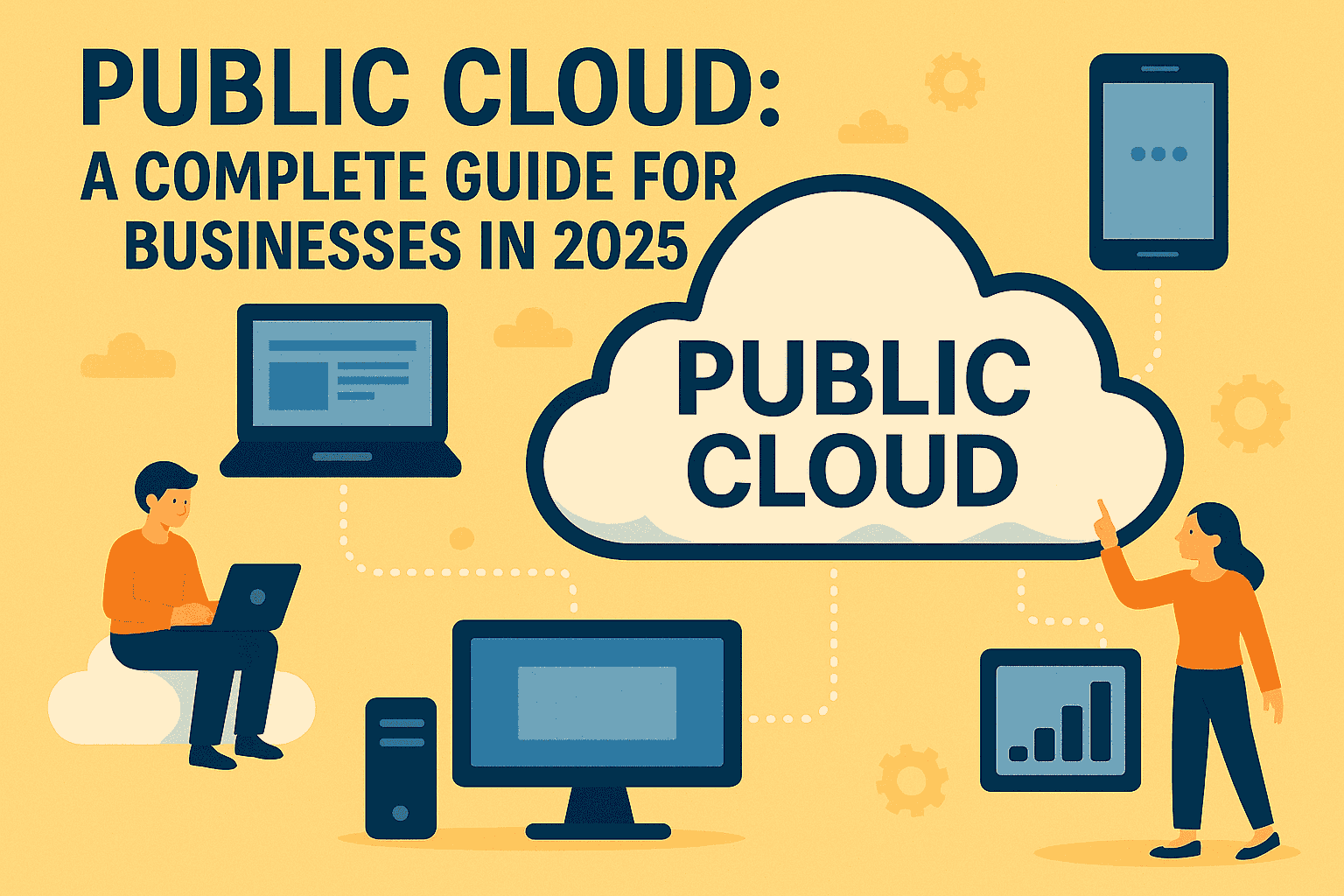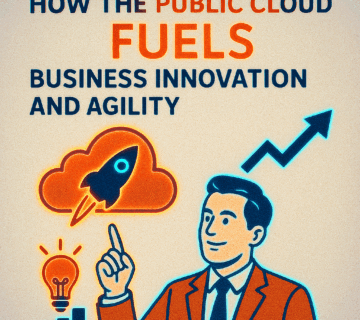Public Cloud: A Complete Guide for Businesses in 2025

With today’s rapidly evolving digital world, organizations are always under the pressure of innovating faster, expanding operations economically, and reducing IT costs without compromising security or performance. All this has become possible for businesses of any size and shape due to one technology.
From small startups to multinationals, Public Cloud is today a central pillar for hosting modern applications, enabling remote employees, and enabling worldwide expansion. If you are thinking of utilizing this technology, this guide will walk you through what it is, how it works, its advantages, and some things to look out for before you switch.0
What is the Public Cloud?
In essence, a public cloud is a computer platform where servers, programs, and storage are made available online by a third-party operator. Instead of owning and operating physical infrastructure, organizations can rent computing capacity on-demand.
The elegance is in its simplicity: pay only for what you use, scale as needed, and let the provider handle the heavy lifting of maintenance and security patches.
Key Features
On-Demand Scalability: Turn computing resources on or off instantly based on workload requirements.
Cost Efficiency: Reduce capital expense by only paying for what is consumed.
Global Reach: Host applications and services closer to customers around the world.
High Availability: Built-in redundancy and disaster recovery to minimize downtime.
Routine Updates: Providers automatically update the latest features and security fixes.
Benefits of Public Cloud Utilization
The Public Cloud deployment model offers a range of benefits, especially for companies that require flexibility and speed.
1. Reduced Up front Costs
Conventional IT architecture necessitates a large upfront investment in hardware and data centers. This means much smaller costs for new companies and small and medium-sized businesses to utilize enterprise-grade resources.
2. Rapid Deployment
New environments can be setup and deployed in a matter of minutes with a few fast clicks. Such rapid deployment means faster innovation cycles and reduced time to market.
3. Better Collaboration
Remote and hybrid teams have access to common data and applications from all over the globe. This enhances productivity and decision-making.
4. Business Continuity
Cloud-based data is frequently duplicated across many different geographic locations. This redundancy ensures that even if one data center is brought down, your services are still up and running.
5. Access to Advanced Technology
Public cloud providers are continually reinventing themselves, with advanced services like AI, machine learning, big data analytics, and IoT integration sometimes at no additional cost for infrastructure.
Potential Challenges
While the pros are robust, consider the following:
Security Concerns: Having sensitive data in common infrastructure might pose compliance and privacy issues.
Vendor Lock-In: Being committed to a provider’s environment is costly and technologically challenging to switch.
Performance Variability: Latency and network performance will differ depending on your provider and load.
Cost Management: On-demand pricing can get out of control without controls.
Best Practices for Public Cloud Adoption
Start Small and Scale: Test workloads in the cloud before going full-scale.
Prioritize Security: Implement strong encryption, identity management, and auditing.
Optimize Costs: Leverage cost-monitoring tools to track and control costs.
Train Your Team: Ensure your IT and development teams understand cloud-native strategies.
Plan for Multi-Cloud or Hybrid Models: Don’t put all your eggs in one basket, diversify.
Industries Benefiting the Most
Public cloud services have transformed the following industries:
Healthcare: Secure patient data management and telemedicine.
Finance: Real-time fraud detection and algorithmic trading platforms.
Retail: Scaling e-commerce for high-demand shopping periods.
Education: Remote learning platforms and virtual labs.
Media: Streaming services with global reach.
Future Trends
The public cloud is evolving continuously. Watch out for:
Increased integration of AI and automation to forecast scaling.
Improving security frameworks to meet tighter regulatory requirements.
Increased use of serverless computing for event-based workloads.
Greener cloud operations by virtue of energy efficiency.
FAQ: Public Cloud
1. How do public, private, and hybrid clouds differ from one another?
Public Cloud: The multitenant resources are supplied by a third-party supplier.
Private Cloud: Dedicated infrastructure for a single business that is hosted on-site.
Hybrid Cloud: To increase flexibility, a mix of public and private settings.
2. Does the public cloud provide enough security for sensitive data?
Indeed, big providers use strong security measures including identity management, encryption, and compliance certifications. However, cloud users are responsible for safeguarding their data and apps.
3. How much does it cost to use the Public Cloud?
It varies widely based on usage, services selected, and geography. The pay-as-you-go model offers flexibility but necessitates cost management.
4. Can I switch from one Public Cloud provider to another?
Yes, but it can be challenging due to platform, API, and services differences. Having a multi-cloud strategy from the start can reduce lock-in risks.
5. What is the biggest advantage of migration to the Public Cloud?
The ability to scale the resources in real time with payments only for what is consumed, enabling agility and innovation.
Conclusion
The Public Cloud has revolutionized how businesses approach IT infrastructure, delivering agility, scalability, and access to sophisticated technologies. By drawing on an understanding of both the potential as well as the pitfalls, businesses can craft a cloud strategy that maximizes benefits while managing risk. In 2025 and beyond, the businesses that thrive will be those that leverage the cloud intelligently, move with speed, and place relentless emphasis on delivering exceptional value to their customers.



No comment